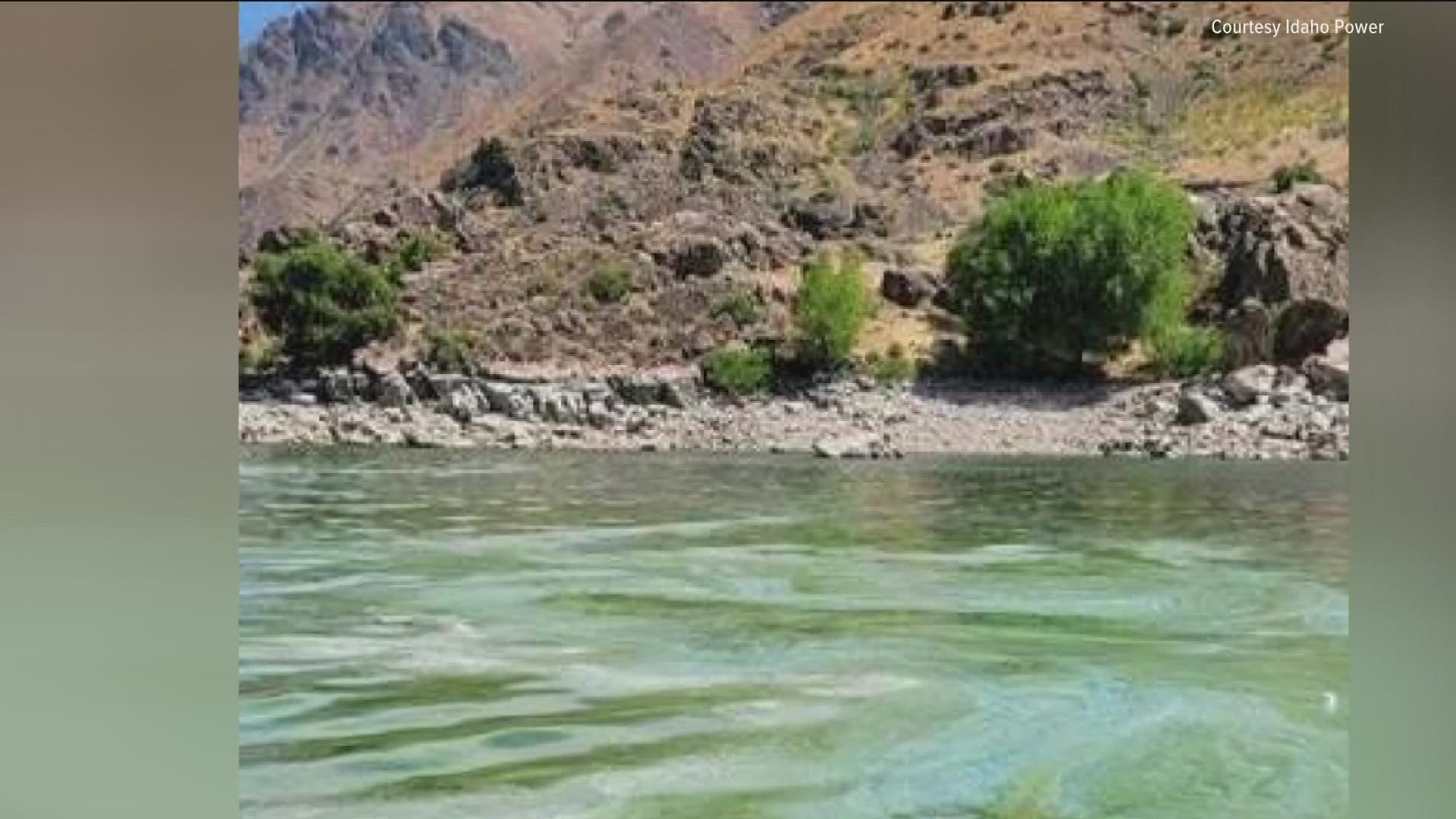BOISE, Idaho — The Southwest District Health Department added Hells Canyon Reservoir to the list of regional water bodies with potentially hazardous levels of toxins from cyanobacteria (also known as blue-green algae) Tuesday.
The health department discourages swimming, drinking, wading, or taking part in activities on the lake. Boiling or filtering water from the lake will not remove toxins, and can also accumulate to unhealthy levels in fish caught for consumption on the lake.
Symptoms of cyanobacteria exposure include rashes, hives, diarrhea, vomiting, coughing, and wheezing. More severe symptoms affecting the liver or nervous system may result from direct consumption of the water. Children, pets, livestock, and those with liver or kidney damage are particularly at risk of illness after exposure.
While recreating near the lake with dogs or pets, Southwest District Health encourages cleaning and washing the coats of pets which swam in the water to prevent any further exposure.
According to Southwest District Health, blue-green algae (which naturally occurs at lower levels in Idaho's bodies of water), blooms in high temperature weather. Blooms vary in appearance and may appear on the lake as mats, surface scum, or foam, and may emit a foul odor. In the past month, Southwest District Health also released a similar warning for Brownlee Reservoir and CJ Strike Reservoir, which are experiencing the same bloom of cyanobacteria.
For more information about harmful algal blooms, visit DEQ’s website or IDHW’s website.
Watch more Local News:
See the latest news from around the Treasure Valley and the Gem State in our YouTube playlist:

